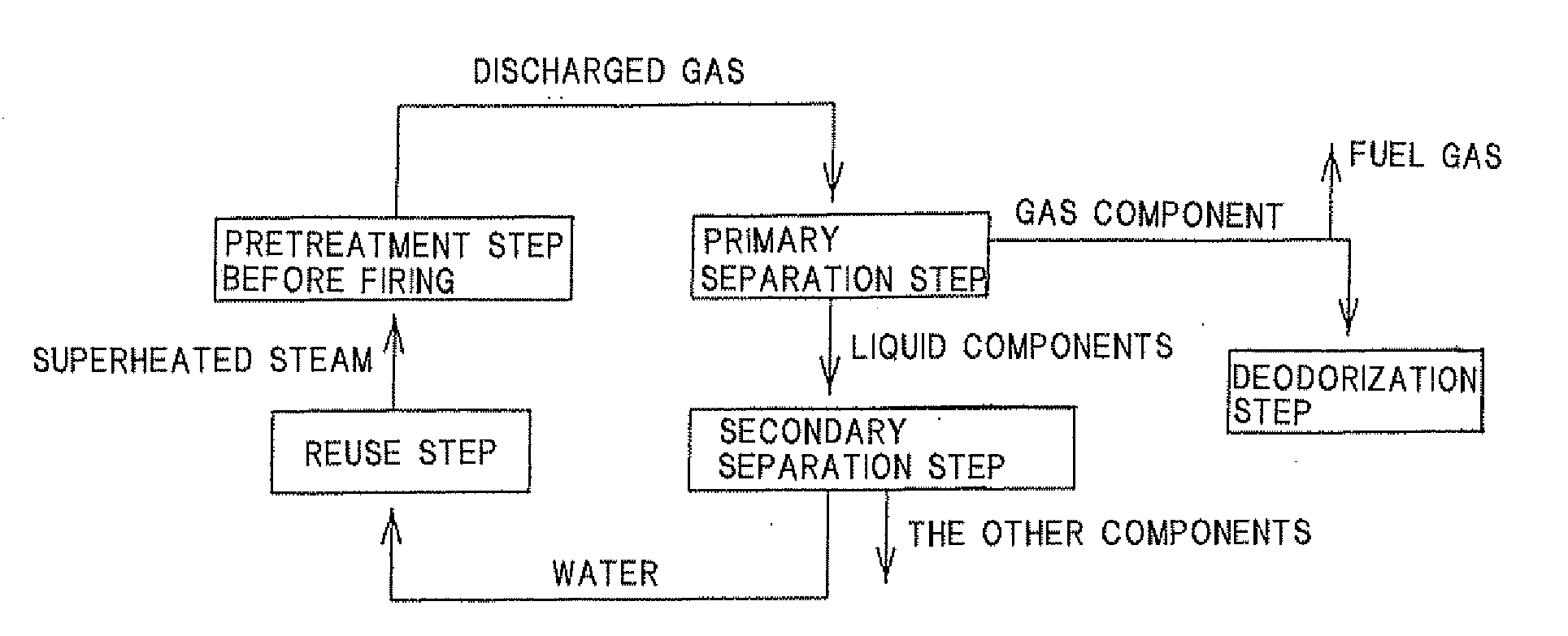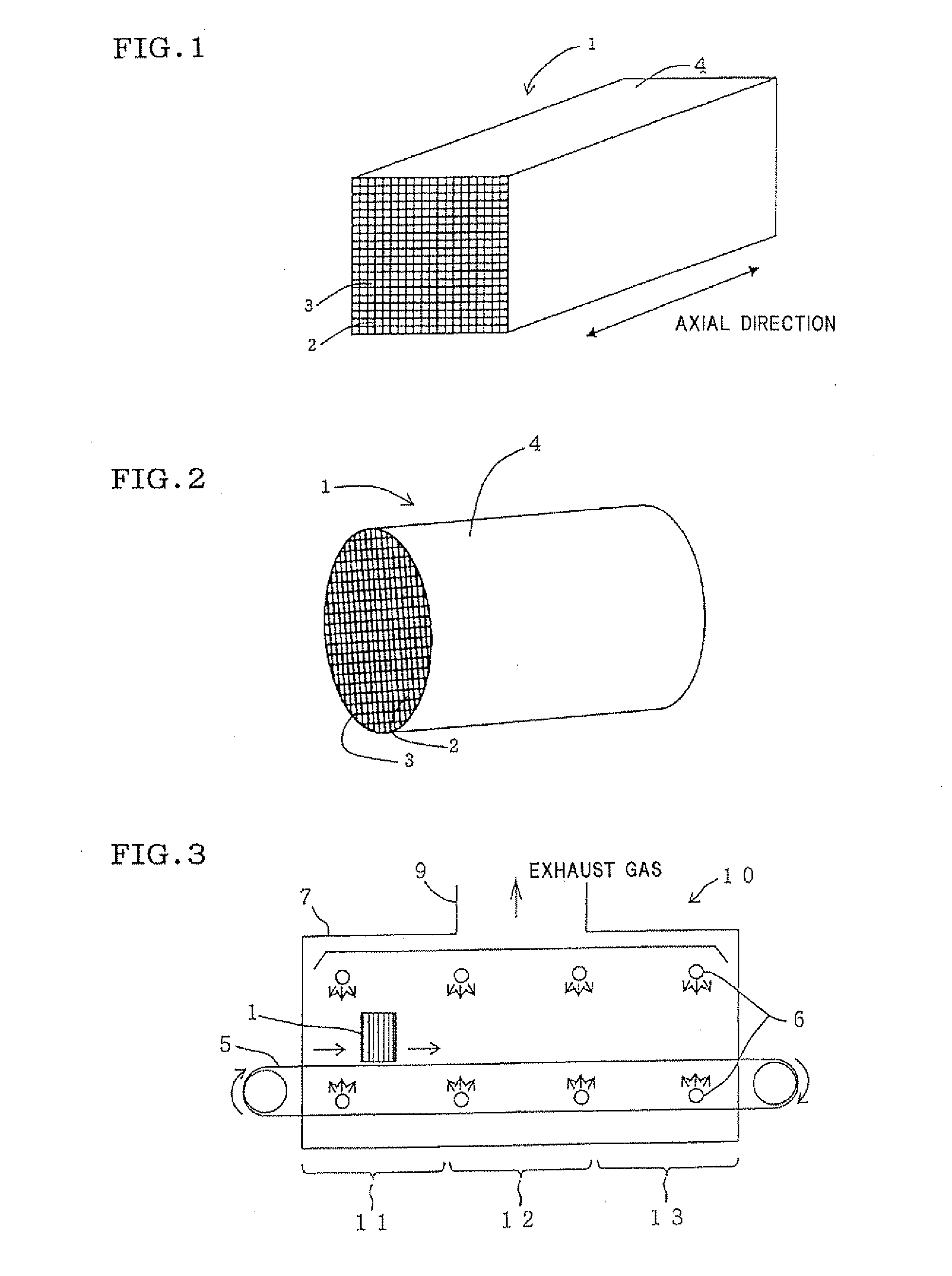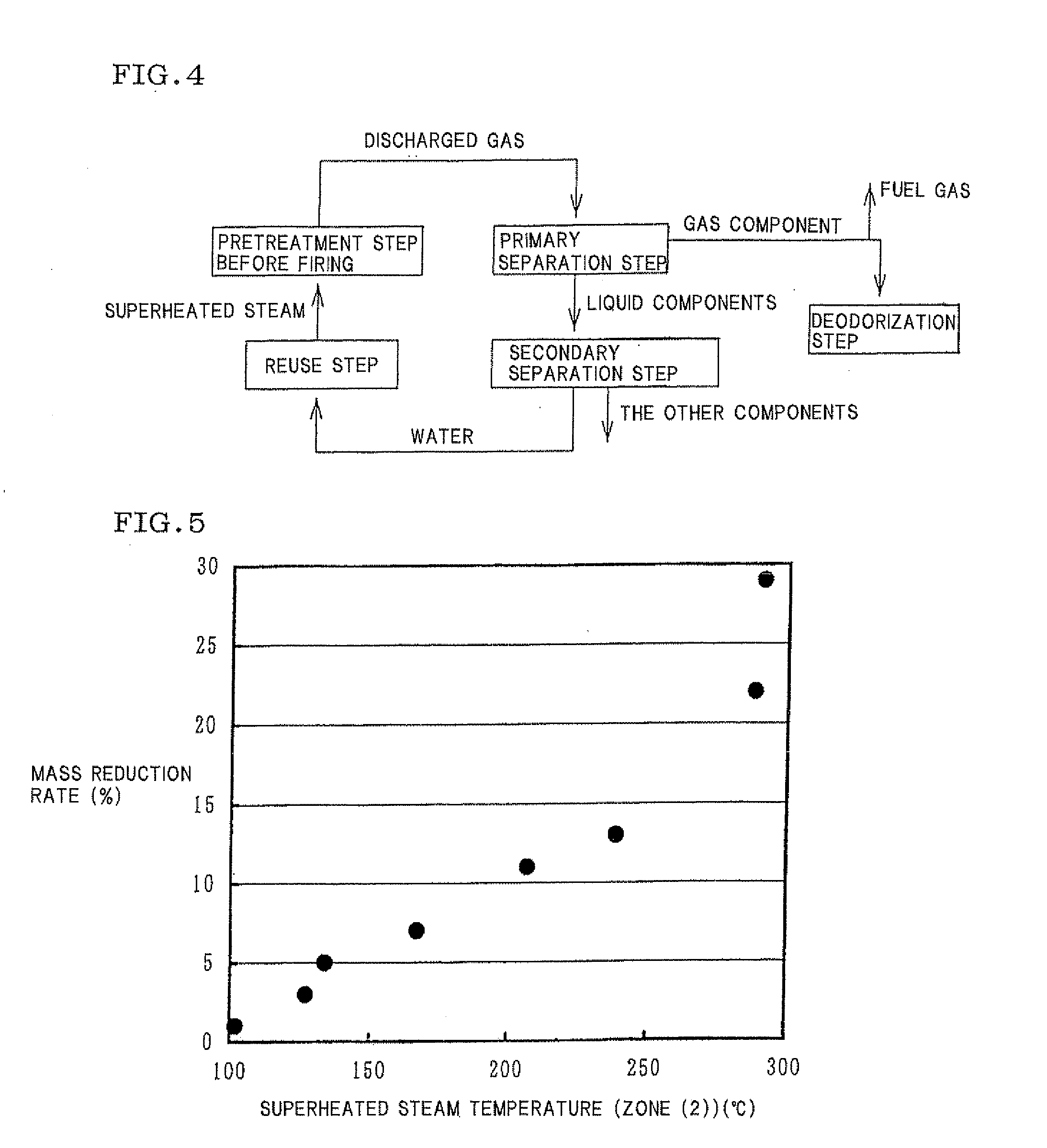Method for pretreating honeycomb formed article before firing and system for pretreating honeycomb formed article before firing
a technology of honeycomb and formed article, which is applied in the field of method system for pretreating honeycomb formed article before firing, can solve the problems of easy generation of defects, disadvantage of extremely long treatment time, and heavy environmental load, and achieve the effect of suppressing the generation of disadvantages such as deformation and suppressing the generation of disadvantages
- Summary
- Abstract
- Description
- Claims
- Application Information
AI Technical Summary
Benefits of technology
Problems solved by technology
Method used
Image
Examples
example
[0090]The present invention is specifically described on the basis of Examples. However, the present invention is by no means limited to these Examples.
examples 1 to 8
[0091]Honeycomb formed articles 1 each having an outer shape as shown in FIG. 2 (outer diameter×flow passage length: 80 mm×100 mm, cell density: 50 cells / cm2, partition wall thickness: 0.3 mm) were prepared, each using a ceramic raw material and a forming auxiliary such as a binder. The honeycomb formed articles were subjected to a pretreatment (drying) before firing in conditions shown in Table 1 using a continuous treatment apparatus 10 having the constitution shown in FIG. 3. Incidentally, the lengths of the zone (1) 11, zone (2) 12, and zone (3) 13 of the continuous treatment apparatus 10 in the traveling direction are 1.0 m, 1.0 m, and 1.0 m, respectively. In addition, the feed rate in the continuous treatment apparatus 10 was 0.33 m / min. The mass (initial mass (g)) before the pretreatment before firing, the mass (g) after the pretreatment, and the mass reduction rate (%) of each of the honeycomb formed articles were shown in Table 1. In addition, a graph where the mass reducti...
example 9 to 12
[0093]There were prepared honeycomb formed articles (dried articles) (outer diameter×flow passage length: 150 mm×200 mm) subjected to drying under the same conditions as in Example 3 except that the treatment time was 40 min. The honeycomb formed articles prepared above were subjected to the pretreatment (degreasing) before firing under the conditions shown in Table 3. Mass (initial mass (g)), before the pretreatment before firing, mass (g) after the treatment, and the mass reduction rate (%) of each of the honeycomb formed articles are shown in Table 3. In addition, a graph where a mass reduction rate (%) is plotted with respect to a superheated steam temperature (° C.) is shown in FIG. 6. As shown in Table 3, under any of the conditions, mass of the honeycomb formed articles after the treatment decreased, and the color changed from white to gray. In addition, the honeycomb formed articles obtained by the treatment under the conditions shown in Examples 9 and 10 were slightly britt...
PUM
| Property | Measurement | Unit |
|---|---|---|
| temperature | aaaaa | aaaaa |
| temperature | aaaaa | aaaaa |
| temperature | aaaaa | aaaaa |
Abstract
Description
Claims
Application Information
 Login to View More
Login to View More - R&D
- Intellectual Property
- Life Sciences
- Materials
- Tech Scout
- Unparalleled Data Quality
- Higher Quality Content
- 60% Fewer Hallucinations
Browse by: Latest US Patents, China's latest patents, Technical Efficacy Thesaurus, Application Domain, Technology Topic, Popular Technical Reports.
© 2025 PatSnap. All rights reserved.Legal|Privacy policy|Modern Slavery Act Transparency Statement|Sitemap|About US| Contact US: help@patsnap.com



